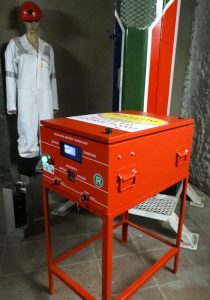A rockfall in a mine can cause catastrophic injuries. These injuries can be severe and even be fatal. In one case, a worker was charged up a face and was severely injured, suffering a fractured collar bone, ribs, and facial lacerations. Another time, a charge up operator was hit by a rock of 150kg that dislodged from a face and landed on him. The rock struck the operator and fractured his leg. Rocks falling from a new face also caused injuries to a muck clearance operator. He was knocked off his feet and sustained a stiff neck.
Impact energies
The energy that is lost during rockfalls can be measured by measuring the impact energies of rocks and blocks. These energies are proportional to the number of collisions that occur. These collisions can also be affected by the coefficient of restitution (COR) of the blocks. These collisions also have an effect on the energy that is transferred to the rockfall.
The impact energies emitted by a falling rock are often measured in terms of KE. However, in many cases, it is difficult to obtain a definitive value of the KE, even when performing a full-scale numerical impact test. In addition, repeated collisions cannot be analyzed in absolute terms.
In the past few years, geohazard science has faced challenges in establishing an experimental foundation for estimating the impacts of rockfalls. The difficulty is that the measurement techniques developed for other natural hazards do not have the spatial and temporal resolution required to investigate rockfall motion. Rockfall motion is characterized by sudden impacts and short-duration impacts. Nevertheless, experimental studies have been conducted on induced rockfall trajectories, although most of them focus on the kinetics of a small number of rocks and a limited fall distance.
Topographic effects on rockfall trajectories
Topographic effects on rockfall trajectories in a mine can be simulated using a numerical model. The analysis is based on several assumptions. In this model, the slope surface planes and main discontinuity sets are determined. Then, the height and area of scars is determined, and rock volumes that are missing from the wall are calculated.
The maximum volume of rockfall is difficult to predict. This is because the volume of rockfall is often not visible from the surface. Hence, it is necessary to use additional information, such as the orientation, spacing, and persistence of discontinuities. This information will help in determining the failure mechanism. Dense spacings or fully persistent joints are more likely to cause instability. In addition, intact rock has higher resistance than joints.
The data collected from the multi-year rockfall experiment revealed some interesting insights. For example, wheel-shaped rocks tended to have higher lateral spread, and they tended to follow a straighter trajectory on steep slopes. This is in contrast to fluid-type gravitational movements, which would respond to wide slopes and follow the line of steepest descent.
Optimization of protection structures
One of the most important tasks in a mine is determining the most effective rockfall protection structures. A rockfall can cause extensive damage to mining equipment, as it can slam into the equipment and cause further damage. Rockfalls are very unpredictable and complex, so there is no way to predict the exact trajectory of each rockfall. Because of this, they should be monitored and evaluated during operations.
Use of Refuge Bay Kits
An crucial component of an emergency preparedness strategy in underground mines is the usage of refuge bays. They give people a safe and secure place to stay while they wait for help or for a danger, such as a vehicle, fire truck or a poisonous gas leak, to subside. Rescue One Equipment offers Refuge Bay Kits. The Refuge Bay Kit includes a 220V Control Panel Safe Unit, complete with battery charger, battery back-up (12 hours), test facility, alarmed enclosure lid, automatic and manual activation. It has a control panel stand, a gel / Lead acid battery 105 amp / hour, a three directional LED module light box with siren and an underground high volume fan 12V Complete with Non Return Flap. Contact Rescue One Equipment today for all your Refuge Bay Kit needs!
